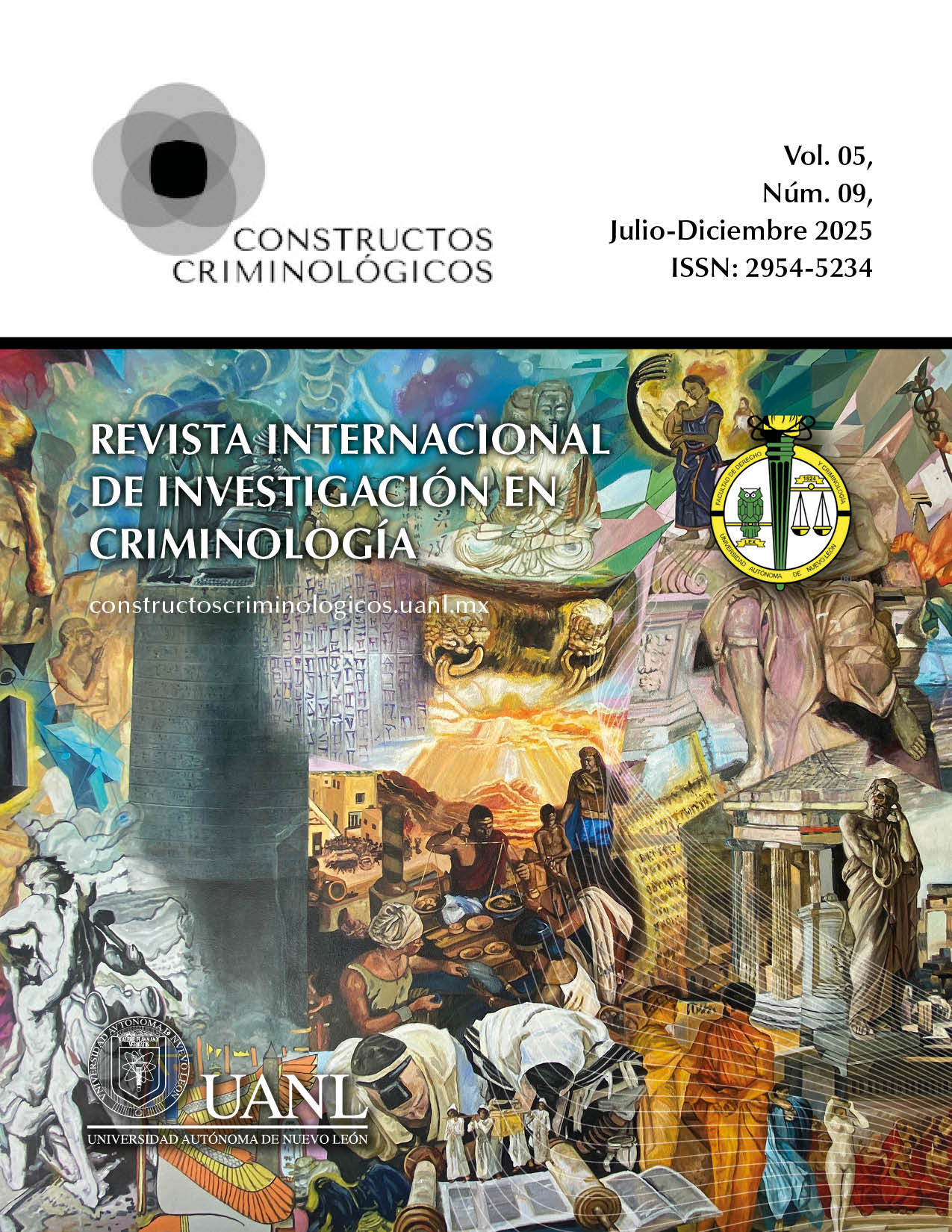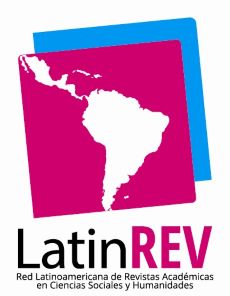Mujeres indígenas del Vaupés en la policía nacional de Colombia
un análisis de sus experiencias como auxiliares de policía
Palabras clave:
Mujeres Indígenas, Integración Cultural, Auxiliares de Policía, Políticas de Igualdad, Policia nacionalResumen
Esta investigación analiza las experiencias de mujeres indígenas que, de manera voluntaria, se incorporaron como auxiliares de policía en el Departamento del Vaupés, Colombia, con el propósito de servir a sus comunidades. Mediante entrevistas a profundidad con cinco participantes, se examinaron sus motivaciones, desafíos, contribuciones a la comunidad, oportunidades de desarrollo y el impacto en la percepción pública de su labor. Una revisión bibliográfica complementó el análisis, contextualizando los hallazgos La presencia de estas mujeres en la Policía del Vaupés simboliza un avance significativo hacia la diversidad e inclusión, destacando su valentía frente a estereotipos de género y étnicos. Las experiencias compartidas evidencian una resiliencia destacada y un compromiso que trasciende las funciones tradicionales de la policía, impactando de forma positiva en las dinámicas comunitarias. Su papel como mediadoras culturales fortalece la confianza entre la policía y la comunidad. El estudio subraya la importancia de implementar políticas inclusivas y programas de formación que aborden los retos identificados, promoviendo un entorno laboral que celebre la diversidad. Estos hallazgos contribuyen a una mejor representación y comprensión de las mujeres indígenas en roles de seguridad, abriendo caminos hacia una sociedad más inclusiva y culturalmente sensible. en la Policía del Vaupés.
Descargas
Citas
Bryman, A. (2016). Social Research Methods (Oxford University Press).
CELADE-División de Población y la División de Asuntos de Género de la CEPAL. (2015). Mujeres indígenas en América Latina. Dinámicas demográficas y sociales, en el marco de los derechos humanos.
Creswell, J. W. (2013). Research Design: Qualitative, Quantitative, and Mixed Methods Approaches (Sage Publications).
Departamento Administrativo Nacional de Estadística. (2021). Inicio [Página web]. DANE. https://www.dane.gov.co/
García, A. (2019). Interconnected Identities: Exploring the Intersection of Professional and Community Roles. Journal of Cultural Diversity, 26(3), 120-127.
García, A. (2022). Interagency Collaboration and Diversity Initiatives: A Case Study in Policing. Public Administration Review, 82(1), 145-158.
García, A., & Díaz, J. (2021). Cultural Sensitivity in Policing: The Unique Contributions of Indigenous Women Officers. Police Quarterly, 24(4), 537-558.
García, A., & Martínez, E. (2019). Cultural Resistance and Organizational Change: Examining Challenges in Diversity Initiatives. Journal of Applied Psychology, 104(3), 421-438.
García, A., & Torres, J. (2019). Programas de Prevención del Delito en Comunidades Indígenas: El Papel de las Oficiales Indígenas. Crime & Delinquency, 65(10), 1477-1504.
García, A., Pérez, J., & Soto, M. (2020). Cultural Sensitivity Training in Law Enforcement: A Comprehensive Approach. Journal of Cultural Diversity and Ethnic Minority Psychology, 26(2), 189-201.
García, E. (1991). Lenguas indígenas de Colombia: Una visión descriptiva. Instituto Caro y Cuervo.
García, J. (2019). Mujeres Indígenas en Instituciones de Seguridad. Editores Colombianos.
García, M. (2020). Building Trust Between Police and Indigenous Communities: A Community Policing Approach. Journal of Community Safety and Well-being, 5(1), 12-18.
Gómez, A., et al. (2019). Breaking Barriers: Challenges Faced by Indigenous Women in Law Enforcement. International Journal of Criminology and Sociology, 8(1), 42-58.
González, E. (2023). Beyond Policing: The Multifaceted Roles of Indigenous Women in Law Enforcement. Journal of Indigenous Studies, 15(2), 78-95.
González, F. (2003). Los Tukano orientales del Vaupés: Una introducción a sus formas de vida. Banco de la República.
González, M. (2018). Holistic Approaches to Workplace Inclusion: Lessons from Diversity Policies. International Journal of Management, 37(2), 245-259.
Johnson, K. L. (2014). Breaking the Mold: Women in Non-Traditional Occupations. Gender & Society, 28(5), 682-704.
Johnson, K. L. (2016). Breaking the Mold: Women in Non-Traditional Occupations. Gender & Society, 30(4), 548-567.
Johnson, K. L., & Díaz, J. (2022). Sensibilidad Cultural en la Atención de Problemas Sociales: El Papel Único de las Oficiales Indígenas Femeninas. Journal of Social Issues, 78(1), 63-80.
Johnson, K. L., & Torres, M. (2021). Unveiling Bias: The Impact of Recruitment and Selection Processes on Gender Diversity. International Journal of Human Resource Management, 32(12), 2535-2557.
Jones, P. (2017). Inclusión Cultural en Instituciones Policiales. Editores Latinoamericanos.
López, M., et al. (2018). Overcoming Gender and Ethnic Stereotypes in Law Enforcement: A Comprehensive Approach. Policing and Society, 28(3), 321-340.
Martínez, E., & Díaz, M. (2018). Construyendo Confianza Comunitaria: El Papel de las Mujeres Indígenas en la Policía. Journal of Community Safety & Well-Being, 3(2), 45-57.
Martínez, E., & Gómez, M. (2019). Building Trust Through Cultural Understanding: The Role of Indigenous Women in Policing. Journal of Community Psychology, 47(2), 189-204.
Ministerio del Interior. (2022). Política de inclusión laboral de las mujeres indígenas en las instituciones del Estado. Bogotá, Colombia: Ministerio del Interior.
Neuman, W. L. (2014). Social Research Methods: Qualitative and Quantitative Approaches. Pearson.
ONU. (2018). Promoción de la Igualdad de Género y el Empoderamiento de las Mujeres: Informe del Secretario General. Recuperado de https://www.un.org/womenwatch/daw/beijing/platform/
Oyarce, A. M. (2018). Mujeres indígenas en la policía: una mirada a las buenas prácticas. Revista de la Academia Nacional de Seguridad Pública, 12(22), 1
Patton, M. Q. (2015). Qualitative Research & Evaluation Methods (Sage Publications).
Pérez, S. (2020). Navigating Challenges: The Experiences of Indigenous Women in Policing. International Journal of Gender and Women's Studies, 8(2), 112-128.
Policía Nacional de Colombia. (2023). Informe de incorporación 2022. Bogotá, Colombia: Policía Nacional de Colombia.
Reichel-Dolmatoff, G. (1976). Cosmología y chamanismo: Ensayos de interpretación indígena. Editorial Kelly.
Rodríguez, J. (2021). Enhancing Diversity in Policing: Strategies and Best Practices. Policing: A Journal of Policy and Practice, 15(1), 88-104.
Rodríguez, M. (2020). Mujeres Indígenas en el Contexto Social Colombiano. Ediciones Andinas.
Rodríguez, S. (2016). Individual Experiences and Institutional Support: A Holistic Approach to Workplace Inclusion. Journal of Applied Psychology, 101(8), 1121-1130.
Rodríguez, S. (2018). Individual Experiences and Institutional Support: A Holistic Approach to Workplace Inclusion. Journal of Applied Psychology, 121(5), 1121-1130.
Rodríguez, S. (2020). Empowering Women in Law Enforcement: Strategies for Professional Development. Police Quarterly, 23(4), 477-498.
Rodríguez, S. (2021). Mentorship Programs in Policing: A Comprehensive Guide. International Journal of Police Science & Management, 23(1), 45-58.
Rodríguez, S., & Gómez, M. (2021). Iniciativas Sociales Lideradas por Oficiales Indígenas Femeninas: Un Enfoque de Desarrollo Comunitario. International Journal of Community Policing and Comparative Police Strategies, 9(1), 35-53.
Rodríguez, S., & Torres, M. (2020). Breaking Gender Stereotypes: The Impact of Female Representation in Law Enforcement. Gender & Society, 34(3), 435-457.
Salazar, R. (2021). Building Trust: The Role of Community Policing in Strengthening Police-Community Relations. International Journal of Police Science & Management, 23(1), 76-91.
Sánchez Márquez, M. C. (2021). Mujer indígena, desigualdad social y quebrantamiento de sus derechos. Novum Jus, 15(1), 1-14.
Sánchez, R. (2021). Mujeres Indígenas en la Policía: Desafíos y Oportunidades. Editorial Andina
Smith, A. (2018). Diversidad Cultural en Instituciones Policiales. Editorial Nacional.
Smith, J. (2017). Understanding Diversity in the Workplace: An Essential Element for Addressing the Needs of Marginalized Groups. Journal of Organizational Diversity in the Workplace, 6(2), 45-56.
Smith, J., & Díaz, M. (2018). Leadership Representation and Gender Diversity: A Comprehensive Analysis. Journal of Organizational Diversity in the Workplace, 7(1), 12-26.
Smith, J., & Johnson, K. L. (2019). Gender Bias in Recruitment: Strategies for Ensuring Equity. Journal of Applied Psychology, 104(9), 1202-1213.
Smith, J., & Torres, M. (2022). Cultural Competence in Community Policing: Challenges and Strategies. Journal of Criminal Justice, 76, 101788.
Valenzuela, M. E. (2010). El trabajo de las mujeres policías. Revista de la Academia Nacional de Seguridad Pública, 4(7), 63-70.
Descargas
Publicado
Cómo citar
Número
Sección
Licencia
Derechos de autor 2025 Gabriel Eduardo Guerrero Nieto, Martha Lucia Gallego Betancurt, Melquicidec Parra Maca, Liceth Narvaez Martinez

Esta obra está bajo una licencia internacional Creative Commons Atribución-NoComercial 4.0.
Los autores/as que publiquen en esta revista aceptan las siguientes condiciones:
a. Los autores/as conservarán sus derechos de autor y garantizarán a la revista el derecho de primera publicación de su obra, el cual estará simultáneamente sujeto a la Licencia Creative Commons Atribución-NoComercial 4.0 Internacional. que permite a terceros compartir la obra siempre que se indique su autor y su primera publicación esta revista.
b. Los autores/as pueden realizar otros acuerdos contractuales independientes y adicionales para la distribución no exclusiva de la versión del artículo publicado en esta revista (p. ej., incluirlo en un repositorio institucional o publicarlo en un libro) siempre que indiquen claramente que el trabajo se publicó por primera vez en esta revista.
c. Se permite y recomienda a los autores/as a publicar su trabajo en Internet (por ejemplo en páginas institucionales o personales) posterior al proceso de revisión y publicación, ya que puede conducir a intercambios productivos y a una mayor y más rápida difusión del trabajo publicado (Véase El efecto del acceso abierto).










 Constructos criminológicos Vol. 5 Núm. 9, Julio-Diciembre 2025, es una publicación semestral editada por la Universidad Autónoma de Nuevo León, a través de la Facultad de Derecho y Criminología. Dirección de la publicación: Av. Universidad s/n Cd. Universitaria C.P. 66451, San Nicolás de los Garza, Nuevo León, México.constructoscriminologicos.uanl.mx, constructoscriminologicos@uanl.mx. Editor responsable: Dr. José Zaragoza Huerta, Facultad de Derecho y Criminología. Reserva de Derechos al Uso Exclusivo núm. 04-2024-110717414100-102 ISSN 2954-5234, ambos otorgados por el Instituto Nacional del Derecho de Autor. Responsable de la última actualización: Dr. José Zaragoza Huerta, Facultad de Derecho y Criminología Av. Universidad s/n Cd. Universitaria C.P. 66451, San Nicolás de los Garza, Nuevo León, México. Fecha de la última modificación 10 de julio 2025.
Constructos criminológicos Vol. 5 Núm. 9, Julio-Diciembre 2025, es una publicación semestral editada por la Universidad Autónoma de Nuevo León, a través de la Facultad de Derecho y Criminología. Dirección de la publicación: Av. Universidad s/n Cd. Universitaria C.P. 66451, San Nicolás de los Garza, Nuevo León, México.constructoscriminologicos.uanl.mx, constructoscriminologicos@uanl.mx. Editor responsable: Dr. José Zaragoza Huerta, Facultad de Derecho y Criminología. Reserva de Derechos al Uso Exclusivo núm. 04-2024-110717414100-102 ISSN 2954-5234, ambos otorgados por el Instituto Nacional del Derecho de Autor. Responsable de la última actualización: Dr. José Zaragoza Huerta, Facultad de Derecho y Criminología Av. Universidad s/n Cd. Universitaria C.P. 66451, San Nicolás de los Garza, Nuevo León, México. Fecha de la última modificación 10 de julio 2025.